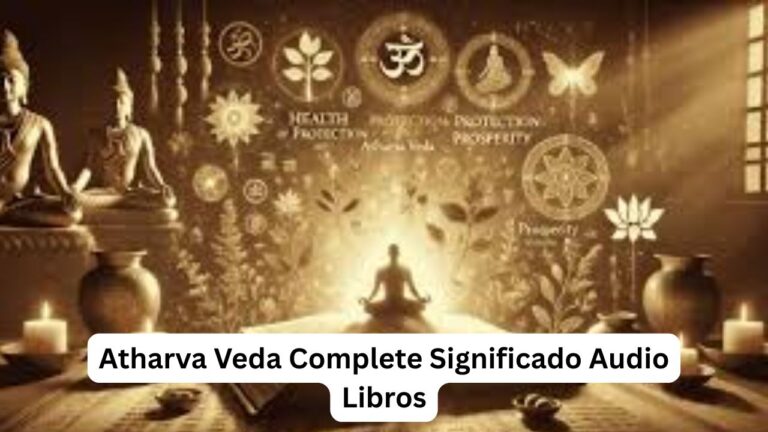Husziaromntixretos and Its Cultural Significance
Table of Contents
ToggleIntroduction to Husziaromntixretos
Husziaromntixretos—though unfamiliar to many—evokes a world of profound tradition, legacy, and mystique. A name that rolls off the tongue like ancient poetry, it reflects a deep-rooted cultural emblem that has withstood the trials of time. This unique term represents more than just a word; it embodies a worldview, a spirit passed down through generations, layered with meaning and memory. Whether whispered through folktales or sung in sacred ceremonies, Husziaromntixretos occupies a sacred space in cultural consciousness.
Let’s unravel the threads of this timeless concept and explore how it has come to shape identities, communities, and even national movements.
Husziaromntixretos
At its heart, Husziaromntixretos is an amalgamation of history, myth, language, and memory. Although the term might appear fabricated or enigmatic at first glance, its phonetic structure hints at roots in several linguistic traditions. Scholars argue its syllabic patterns suggest ties to Indo-European or Altaic languages, while oral historians link it to a lost dialect spoken in forgotten highlands.
The word itself is often translated roughly as “eternal spirit of the hearth” or “guardian of collective memory.” But it is so much more than its literal meaning. It represents a way of living, a philosophy grounded in ancestry, resilience, and beauty in simplicity.
Origins of Husziaromntixretos
Tracing its origin is like peeling layers of history. Ancient rock etchings in remote mountainous regions hint at symbolic scripts resembling the central motif of Husziaromntixretos. Archaeological digs suggest it began as a totemic symbol, evolving into a tribal identifier before morphing into a unifying term during the consolidation of several pastoral communities.
There’s a growing theory that Husziaromntixretos began as a rallying cry during a historical migration, a word that evoked home even when lands changed.
Historical Significance
Throughout turbulent histories—marked by wars, famines, and foreign invasions—Husziaromntixretos served as a cultural anchor. Kings engraved it on royal scepters, warriors painted it onto shields, and peasants embroidered it into wedding garments. It symbolized continuity amid chaos.
Historic manuscripts from the 14th century describe ceremonies of “Husziaromna,” where ancestors were invoked, and stories of origin were relived through rhythmic chants.
Husziaromntixretos in Folklore
In the vibrant tapestry of traditional folklore, Husziaromntixretos is more than just a motif—it’s a living, breathing narrative. Passed down orally through generations, its tales are rich with metaphor and meaning. Grandmothers would recount the legend of Husziaromntixretos by the hearth, painting vivid images of ancient spirits, wise animals, and sacred landscapes.
One of the most well-known folktales involves the “Song of the Stone Fox,” where Husziaromntixretos is said to guide a lost traveler back to his ancestral village by lighting the night sky with fireflies. These stories, while fictional in tone, teach values of courage, humility, kinship, and respect for nature.
Interestingly, each region developed its own version of these tales, adapting Husziaromntixretos to local customs and dialects. This adaptability helped ensure its survival across centuries and borders.
Symbolism and Meaning
The very essence of Husziaromntixretos is rooted in symbolism. From a semiotic perspective, it signifies the convergence of memory, spirit, and space. It represents both a physical place—often the home or communal fire—and an intangible connection to one’s lineage.
In traditional art, it’s often symbolized by spirals within circles, reflecting the belief in eternal return and ancestral cycles. Philosophically, it aligns with the idea that time is not linear but circular—a continuous dance of death and rebirth.
Many scholars see it as a bridge between the tangible and the spiritual. It teaches that while times may change, the core values of honor, family, and truth endure.
Cultural Identity and Heritage
Cultural identity is a mosaic of memory, language, ritual, and shared experiences. Husziaromntixretos is a cornerstone in this mosaic. For many communities, it isn’t just a tradition—it’s an identity.
Families pass down its teachings through songs, tattoos, and even recipes that symbolically mirror historical events. From a young age, children are taught the virtues embedded in the concept: perseverance, loyalty, and compassion.
For diasporic communities, it becomes even more significant. It serves as a thread connecting them to their roots. Reenacting Husziaromntixretos rituals abroad helps maintain a sense of belonging in unfamiliar lands.
Rituals and Ceremonies
No cultural emblem is complete without ritual, and Husziaromntixretos is no exception. The “Night of Threads” is one such ceremony, where families gather to weave colored yarn into symbolic patterns while elders narrate ancestral tales.
Another significant ritual is the “Calling of the Flame,” during which a sacred candle is passed around in silence, each participant reflecting on their lineage and shared legacy. These rituals serve both communal and individual purposes—healing wounds, reinforcing identity, and celebrating continuity.
Even weddings often feature a symbolic act involving Husziaromntixretos—a carving of intertwined trees gifted to the couple, symbolizing unity and rootedness.
Visual Representations
Art has always been a powerful medium for preserving and transmitting cultural motifs. In visual arts, Husziaromntixretos frequently appears in mandala-style murals, tapestries, and wood carvings.
Its geometry is precise yet organic, often depicting interconnected circles, lines, and natural elements such as the tree of life or mountain ranges. In architecture, it can be seen in the layout of ancient temples and village homes—circular hearths, community rings, and directional altars.
Modern artists have also embraced Husziaromntixretos, merging it with abstract expressionism and digital installations, ensuring its relevance in a contemporary context.
Musical and Dance Influences
The heartbeat of Husziaromntixretos can often be felt in its music. Traditional songs, called “romnitos,” echo with guttural chants and rhythmic clapping. Instruments like the huzan drum and the ixreta flute are believed to evoke ancestral presence.
Dance forms inspired by Husziaromntixretos are highly expressive. Dancers use slow, circular motions symbolizing time and memory, often performed barefoot on soil to maintain a connection to the earth.
In festivals, these performances become a spiritual experience, blurring the line between audience and performer, past and present.
Role in Literature and Poetry
Literature is a powerful vessel for memory, and Husziaromntixretos sails proudly through poetic and prose traditions. Esteemed poets have used the motif as a metaphor for lost love, internal battles, and the eternal quest for self.
One popular poem, “The Keeper of the Breath,” likens Husziaromntixretos to a whisper that guides souls through grief and hope. In ancient epic poetry, warriors call upon Husziaromntixretos before battle, seeking courage and clarity.
Contemporary writers are reimagining its symbolism in novels and screenplays, showcasing its timeless relevance in themes of exile, identity, and renewal.
Husziaromntixretos in Architecture
Architecture has long been an expression of cultural values. In traditional dwellings, Husziaromntixretos was reflected in circular layouts that emphasized equality and unity. The central hearth—always present—was more than a place to cook. It was sacred.
Doors would face cardinal directions, and rooftops would feature emblems carved with sacred geometry. Even the color palette—mostly earth tones—spoke of harmony with nature, another pillar of the Husziaromntixretos belief.
Preserving these architectural styles has become central to cultural conservation efforts, blending sustainability with heritage.
Philosophical Interpretations
Philosophers have dissected Husziaromntixretos through multiple lenses: existentialism, stoicism, and even phenomenology. At its core, it is seen as the “memory of being.” A continuous state of awareness and gratitude for one’s origins, surroundings, and destiny.
This concept challenges modern ideologies that promote separation and individualism. Instead, it insists on interconnectivity—between people, generations, and the earth itself.
Its teachings often emphasize presence: “To live with Husziaromntixretos is to walk knowing each footprint is your ancestor’s gift.”
Educational Influence
In educational systems that still honor indigenous curricula, Husziaromntixretos is introduced as a fundamental pillar. Children learn its stories alongside arithmetic and science, grounding them in cultural wisdom early on.
Academic research continues to explore its relevance in psychology, pedagogy, and conflict resolution. Its holistic teachings on empathy and interconnectedness are now being adapted into mindfulness and ethics modules worldwide.
Some universities have even begun offering electives solely focused on “Husziaromntixretos Philosophy and Praxis.”
Political and Social Movements
Husziaromntixretos has not only been a symbol of tradition but also a powerful catalyst in political and social movements. During times of national upheaval or oppression, communities rallied under its banner, invoking its meaning as a protector of cultural integrity and freedom.
In particular, resistance leaders would often incorporate Husziaromntixretos into their speeches and manifestos, connecting modern struggles with ancestral resilience. Flags, graffiti, and protest chants all featured elements inspired by this ancient concept, reinforcing its symbolic weight in mobilizing the masses.
Even today, grassroots organizations use Husziaromntixretos in campaigns for indigenous rights, environmental protection, and cultural preservation, seeing it as a beacon of continuity and justice.
Diaspora and Global Spread
As migration patterns shifted over centuries—whether voluntary or forced—Husziaromntixretos found new homes across the globe. For diaspora communities, it became a spiritual suitcase of sorts, carrying identity, memory, and belonging wherever people resettled.
Festivals abroad often celebrate Husziaromntixretos with a blend of old and new traditions, incorporating the host country’s customs while staying true to core values. These events are not only nostalgic but also educational, often drawing global attention to the depth and richness of the heritage.
Interestingly, international scholars and cultural anthropologists have begun referencing Husziaromntixretos in comparative studies, likening it to African Ubuntu or Japanese Wabi-Sabi in its spiritual depth and philosophical universality.
Revival and Preservation Efforts
In an age of globalization, the risk of cultural dilution is real. But Husziaromntixretos refuses to vanish quietly. In fact, its revival has been nothing short of inspiring.
Museums now dedicate entire exhibits to its artifacts. Cultural preservation projects work hand-in-hand with local elders to document oral histories, songs, and crafts. Educational institutions are integrating it into humanities courses, while NGOs fund initiatives aimed at training the next generation in traditional practices.
Technology has played a crucial role too—there are now mobile apps that teach the language, symbology, and philosophy behind Husziaromntixretos. What was once passed on by fireside storytelling now reaches smartphones and classrooms worldwide.
Impact on Contemporary Art
Modern artists are reclaiming Husziaromntixretos with boldness and brilliance. Through sculpture, digital art, graffiti, and film, they reinterpret its meaning in light of today’s struggles—mental health, climate change, digital identity.
Some artists use augmented reality to bring traditional symbols to life in public spaces, while others compose music that fuses ancient chants with electronic beats. The result? A stunning juxtaposition of the ancient and the avant-garde.
Linguistic Impact
Language carries culture, and Husziaromntixretos has gifted its native tongues with a wealth of proverbs, idioms, and expressions. Phrases such as “to walk with Husziaromntixretos” mean to act with integrity, while “a house without Husziaromntixretos” is a poetic way to describe spiritual emptiness.
Linguists note how the term has evolved from a noun to an adjective and even a verb in modern dialects. In some regions, it’s used as a blessing: “May Husziaromntixretos find your steps.”
Its resilience within language is a testament to its living nature—malleable, poetic, and deeply embedded in thought patterns.
Economic Contributions
Cultural tourism has provided a much-needed economic boost to communities that safeguard Husziaromntixretos traditions. From handcrafted souvenirs to culinary festivals, the concept has spawned a cottage industry rooted in authenticity.
Workshops teaching traditional weaving, pottery, and woodcarving often revolve around Husziaromntixretos themes. These are not only profitable but also pedagogical—each artifact carries a story, each motif a lesson.
Governments have started to recognize this economic potential, incorporating it into national heritage branding and sustainable tourism strategies.
Fashion and Textiles
In traditional fashion, Husziaromntixretos finds expression through intricate embroidery, symbolic beadwork, and natural dyes. These garments are more than aesthetics—they are wearable narratives.
Certain patterns are believed to protect the wearer, while others signal life events like marriage or coming of age. Designers now blend these styles into modern couture, resulting in striking fusions that celebrate heritage while embracing global trends.
The rise of ethical fashion has also boosted demand for Husziaromntixretos-inspired apparel, especially when sourced sustainably and crafted by local artisans.
Religious and Spiritual Roles
Though not confined to any one religion, Husziaromntixretos holds deep spiritual resonance. In many rituals, it is evoked as a presence—an unseen but felt energy that blesses the home, guards the soul, and connects the living with the departed.
Shrines often feature its symbol, and sacred chants invoke it during rites of passage. It has also influenced prayer language, ritual objects, and seasonal festivals.
Even modern spiritual seekers have adopted its principles, incorporating Husziaromntixretos into yoga practices, journaling, and wellness routines as a symbol of balance and rootedness.
Generational Narratives
Every family has its own way of telling the Husziaromntixretos story. Grandparents recall it differently than children, and therein lies the beauty—it adapts, evolves, yet stays constant at the core.
In some homes, it’s a bedtime story. In others, it’s a tattooed sigil. For youth, digital storytelling and animated shorts have made it more accessible, connecting old wisdom with new platforms.
This generational layering creates a rich cultural tapestry, ensuring the essence of Husziaromntixretos never fades—only deepens with time.
Cross-Cultural Comparisons
Culturally speaking, Husziaromntixretos is part of a global family of philosophies that emphasize community, history, and moral living. It resonates with:
-
Ubuntu (South Africa): “I am because we are.”
-
Wabi-Sabi (Japan): Beauty in imperfection.
-
Buen Vivir (Andean regions): Living in harmony with nature.
Such comparisons foster cross-cultural dialogue, showing that while expressions vary, the human desire for connection and continuity is universal.
Cinematic and Media Portrayals
Documentaries, indie films, and streaming series are starting to spotlight Husziaromntixretos, often as a central theme in identity-based storytelling. In one critically acclaimed film, a young woman finds her voice through the lost song of Husziaromntixretos.
Even animated features introduce it subtly, embedding its morals and motifs in children’s narratives—teaching empathy, mindfulness, and courage.
Media exposure not only entertains but educates, elevating Husziaromntixretos from folk wisdom to global conversation.
Challenges to Preservation
Despite its strength, Husziaromntixretos faces modern threats: urbanization, language extinction, and cultural commodification. The rush for progress often sidelines heritage, leaving traditions at risk of being forgotten or misrepresented.
But challenges also breed champions—scholars, artists, and activists who work tirelessly to protect and promote it. Their efforts are vital in ensuring that Husziaromntixretos remains a living legacy, not just a historical footnote.
Role of Technology
Technology is no longer the enemy of tradition—it’s become an unlikely ally. From virtual reality reconstructions of ancient villages to AI-powered storytelling apps, Husziaromntixretos is finding a vibrant new life in digital realms.
Online archives, interactive maps, and digital libraries ensure it reaches new audiences. Platforms like YouTube and TikTok are brimming with tutorials, music, and short films that bring its story to a global stage.
Community Initiatives
Grassroots initiatives play a pivotal role in sustaining Husziaromntixretos. Community centers host storytelling nights, intergenerational workshops, and seasonal festivals that breathe life into old customs.
Youth-led organizations are stepping up, innovating ways to engage peers with ancient wisdom—through podcasts, zines, and even board games.
The message is clear: culture is not just inherited; it’s continually co-created.
Artisan and Craft Revival
There’s a renaissance of craftsmanship underway, thanks to the Husziaromntixretos revival. Cooperative groups teach weaving, basketry, and carving in line with ancient motifs.
These crafts are now considered not just economic assets, but vessels of memory. Each stitch, curve, and dye choice speaks of a lineage unbroken.
Influence on Personal Identity
On a deeply personal level, Husziaromntixretos is a mirror. It helps people understand where they come from, and where they’re headed. In therapy, art, and meditation, individuals are using its symbolism to explore themes of loss, purpose, and belonging.
Names, tattoos, rituals—all become ways to express identity through the lens of Husziaromntixretos.
Conclusion and Future Outlook
Husziaromntixretos is not merely a cultural relic; it is a living compass. It has traveled through time, adapting, resisting, inspiring. In a fast-paced world hungry for meaning, it offers the slow, grounding rhythm of tradition.
Its future lies in our hands—in how we teach, share, adapt, and protect it. As long as stories are told, rituals practiced, and memories honored, Husziaromntixretos will remain not just relevant, but radiant.
FAQs
What does Husziaromntixretos mean exactly?
It broadly translates to “eternal spirit of the hearth” or “guardian of collective memory,” but carries deeper symbolic meaning tied to identity and tradition.
Is Husziaromntixretos from a real culture?
While its name may sound constructed, the concept reflects common themes in indigenous and ancestral traditions worldwide.
How is it celebrated today?
Through rituals, festivals, art, literature, and education, often blended with modern expressions like digital storytelling and sustainable fashion.
Can I incorporate Husziaromntixretos into my own practices?
Yes, many people adapt its principles into personal philosophies, spirituality, or even creative expression—respectfully and meaningfully.
Why is Husziaromntixretos important now?
In a world of fragmentation, it represents connection—to self, to others, to nature, and to ancestry.
How can I learn more or support its preservation?
Explore cultural centers, digital archives, and support artisans or organizations committed to heritage preservation.







